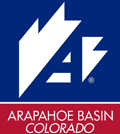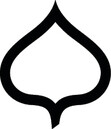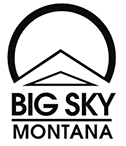An Introductory Guide to Skiing Jackson Hole
There’s no denying that Jackson Hole is big-mountain skiing.
With 4,139 feet of vertical — the second most continuous vertical drop in the United States — and 2,500 in-bound acres and another 3,000 acres of gate-accessed backcountry, Jackson Hole will test the legs and lungs of the hardiest skiers and snowboarders.
You want steeps? Check out Corbett’s Couloir.
You want deep? Head over to the Hobacks.
You want hike-to inbounds terrain? Look no further than Headwall or Casper Bowl.
Well Laid-Out Mountain
But the Wyoming resort, which rates half of its terrain as expert territory, also has a gentler side, with great expanses of blue and double-blue runs — and a modicum of green — to keep the less proficient riders challenged and entertained for days.
So, how does a Jackson Hole newbie navigate such a monster hill and its good-sized transit system (tram, 2 gondolas, 4 high-speed quads and 7 fixed-grip chairs) without getting over one’s head?
“The mountain is laid out pretty well,” says Jeff Lestitian. “To the (looker’s) right of the Bridger Gondola is pretty mellow; it gets spicier the farther left (of the gondola) you go until you reach the classic Jackson Hole terrain, the stuff that most people come to the mountain for.”
Getting One’s Bearings
Lestitian, the operations manager for Black Tie Ski Rentals of Jackson Hole, has been skiing the mountain for more than 20 years, and in that span has come to know the layout pretty well. Without giving away too many secrets, he will graciously help newcomers get their bearings.
“The Sweetwater Gondola (to the mid-station) and Eagles Rest chair is a great area for beginners; it’s completely separate from the rest of the mountain so you don’t have people bombing the hill.”
Nearby is the Teewinot lift which serves “classic mellow warmup terrain, with lots of bike park-type features — banked turns, whoops, etc. — that any kid feeling comfortable on skis would have fun in.”
Higher up you’ll find the Caspar and Apres Vous quads, which provide access to an intermediate’s playground of wide-open cruisers, such as Sleeping Indian, Upper Werner and Sun Dog.
“There are double blues and mellow blues in this area,” Lestitian says. “They’re well groomed; just the place to go if you just want to cruise.”
The Big Mountain Goods
South of the mountain-bisecting Bridger Gondola is where you find the majority of the runs that made Jackson Hole legendary in the annals of big-mountain skiing.
“You’ll find nice north-facing terrain, like Thunder Chutes off the Thunder quad or Bivouac off the Sublette chair, that’s good on a storm day,” Lestitian says. “That’s absolutely fantastic skiing.”
Of course, it’s the resort’s signature Corbett’s Couloir and Hobacks, which are accessed from the tram, that most visitors want to send, but for Lestitian’s money “the unsung hero (run) of the mountain is skiing under the Bridger Gondola; it’s a double fall line full of nooks and crannies to keep you occupied.”
Where to Apres
You can work up a pretty good thirst and/or appetite after a day of exploring Jackson Hole, so Lestitian suggests The Spur, in Teton Mountain Lodge, for “good food, good vibes and lots of locals”; or the Moose’s Belly, situated below the renowned Mangy Moose, “if you’re looking for something a little down and dirty”, or the upscale Handle Bar’s large outdoor deck for “a pretty laid-back atmosphere.”
Osteria and South Gable, two restaurants in the resort’s base area, rank high in Lestitian’s estimation, as do the Snake River Brewery, White Buffalo and Pica’s in the town of Jackson, 12 miles away.
Featured Resorts

Killington Resort

Pico Mountain

Mammoth Mountain

Palisades Tahoe

Arapahoe Basin

Aspen Snowmass

Sugarloaf

Sunday River

Big Sky

